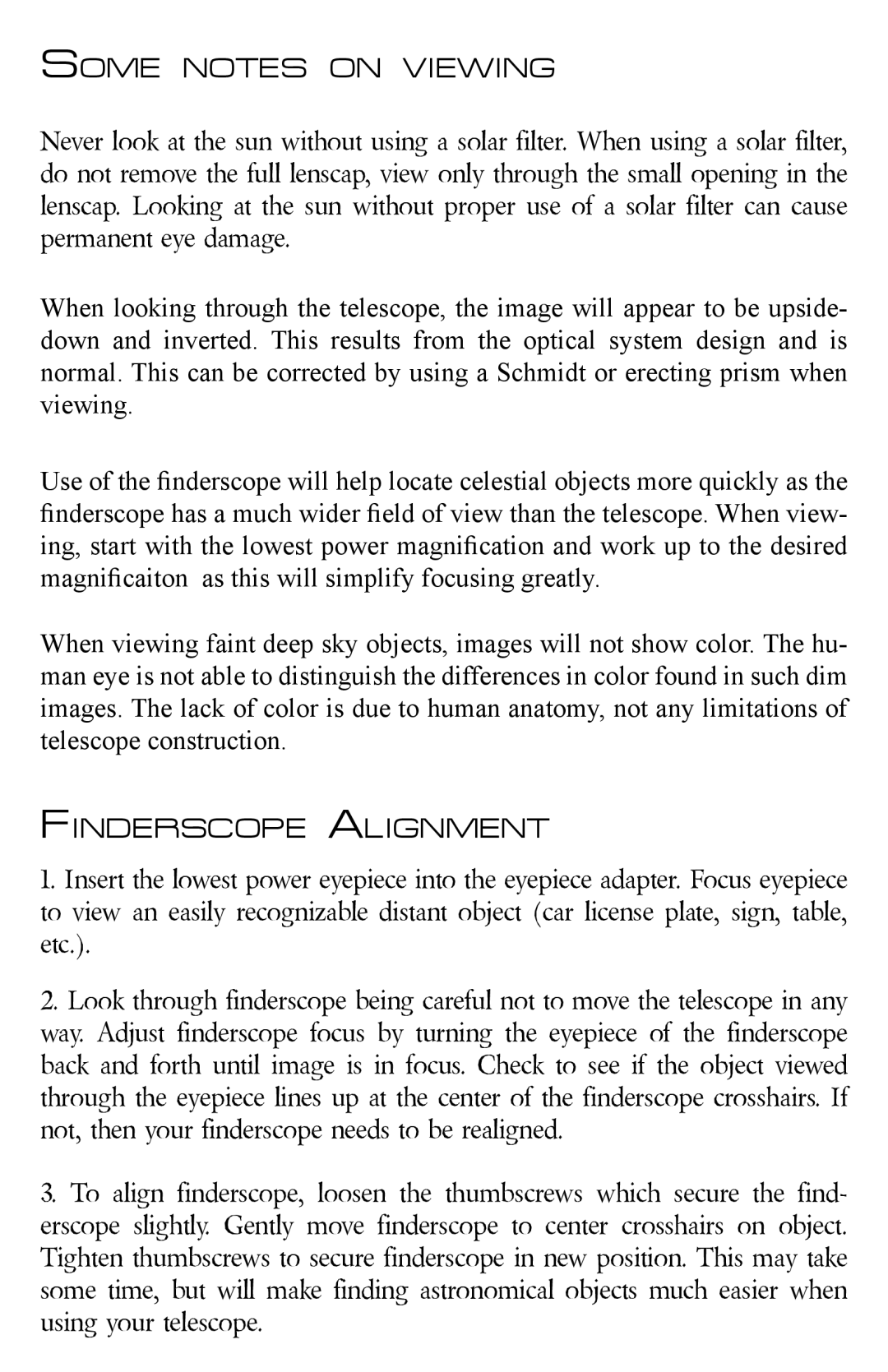SOME NOTES ON VIEWING
Never look at the sun without using a solar filter. When using a solar filter, do not remove the full lenscap, view only through the small opening in the lenscap. Looking at the sun without proper use of a solar filter can cause permanent eye damage.
When looking through the telescope, the image will appear to be upside- down and inverted. This results from the optical system design and is normal. This can be corrected by using a Schmidt or erecting prism when viewing.
Use of the finderscope will help locate celestial objects more quickly as the finderscope has a much wider field of view than the telescope. When view- ing, start with the lowest power magnification and work up to the desired magnificaiton as this will simplify focusing greatly.
When viewing faint deep sky objects, images will not show color. The hu- man eye is not able to distinguish the differences in color found in such dim images. The lack of color is due to human anatomy, not any limitations of telescope construction.
FINDERSCOPE ALIGNMENT
1.Insert the lowest power eyepiece into the eyepiece adapter. Focus eyepiece to view an easily recognizable distant object (car license plate, sign, table, etc.).
2.Look through finderscope being careful not to move the telescope in any way. Adjust finderscope focus by turning the eyepiece of the finderscope back and forth until image is in focus. Check to see if the object viewed through the eyepiece lines up at the center of the finderscope crosshairs. If not, then your finderscope needs to be realigned.
3.To align finderscope, loosen the thumbscrews which secure the find- erscope slightly. Gently move finderscope to center crosshairs on object. Tighten thumbscrews to secure finderscope in new position. This may take some time, but will make finding astronomical objects much easier when using your telescope.
